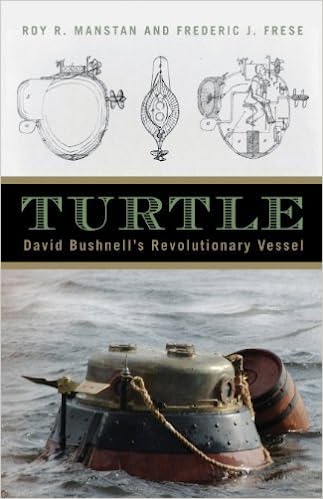History of the River
Russell Buckingham
Bushnell’s Revolutionary Turtle
During the American Revolution, Connecticut contributed far more than just troops and provisions. In Pettipaug (now Essex), the three-masted, 20-gun warship, Oliver Cromwell, was built in Uriah Hayden’s yard.
Meanwhile, in a barn, just northwest of Saybrook (now Westbrook), David Bushnell and his brother Ezra secretly produced the world’s first operational combat submarine. They were helped by clock and tool maker Phineas Pratt and a handful of others. According to local historian Wick Griswold, Pratt had enlisted in the Continental Army but was called back to assist in the construction of the Turtle, a revolutionary endeavor backed by Washington himself. Hayden’s shipyard would have also provided resources for the project. The final assembly took place in a carriage house on Ayers Point (which still exists) with sea trials conducted in protected coves on either side of the Connecticut River.

An exhibit and climb-aboard replica of the Turtle can be found at the Connecticut River Museum in Essex. Another can be found at the USS Nautilus Submarine Force Museum in Groton. Photo by Jerry Roberts.

The definitive book on the subject is “Turtle, David Bushnell’s Revolutionary Vessel” by Roy Manstan and Frederic Frese, WESTHOLME Publishing, 2010.
Bushnell’s younger brother Ezra was trained to pilot the one-man wooden sub, hand-powered by cranks and pedals. The vessel was designed to be maneuvered under an enemy ship and use an auger and lanyard to attach a floating bomb containing a clockwork timing mechanism.
The completed vessel was transported to lower Manhattan to be used against the Royal Navy’s flagship, HMS Eagle, anchored in the harbor along with hundreds of other British ships. But after arrival, Ezra fell desperately ill with the “camp fever” that was rampant among American troops. Sergeant Ezra Lee, a soldier from Lyme, was quickly trained.
On the night of September 6, 1776, Lee climbed into the tiny sub and was towed out into the harbor. Despite struggling with the harbor’s currents, Lee managed to submerge and maneuver the sub under the warship. But no matter how he tried, he could not get the auger to screw into the Eagle’s wooden hull. At last the sub popped to the surface. As Lee franticly pedaled away, a chase boat was launched in pursuit. He released the bomb which exploded, causing enough panic to allow his escape.
Two more attempts were later made, one with Pratt at the helm, but the results were no better. Bushnell brought the sub back to his brother’s barn in Westbrook as he was tasked with other wartime projects. Phineas Pratt’s son reported being shown the Turtle, still in the barn in 1800, but it has long since disappeared. Its fate remains an enduring mystery while its legacy is a tribute to Yankee pluck and ingenuity.

